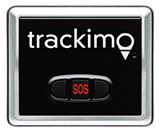There are many products on the market that can help families prevent dangerous elopement and greatly increase the chances of their loved ones returning safely in case elopement does happen. They range from self-funded subscription services that allow you to track someone’s location instantaneously via the internet to centralized, law enforcement-funded systems activated only during a crisis. Different services are available in different geographic regions, so contact your local first responders to find out if there is a centralized system in place.
 If you’re interested in an individual system, HIA’s Beth Benevides suggests Trackimo. Trackimo is about the size of a small box of matches, and it can easily be attached to a belt loop, backpack, keychain, or shoe. After activation at the Trackimo website, you can track the whereabouts of your loved in real-time anywhere you have access to the internet. You can receive alerts when the device leaves a designated area or is traveling above a certain speed. Each device is also equipped with an SOS button, which sends a message to the account holder if pressed. So if the carrier is lost or confused he can tell you exactly where he is. One disadvantage of Trackimo is that depending on the attachment method, it is possible for the carrier to remove and/or lose the device. Trackimo is $139.99 for the device, charging unit, attachment accessories, and one year of account activation. (They also have a dog collar attachment for pet tracking!)
If you’re interested in an individual system, HIA’s Beth Benevides suggests Trackimo. Trackimo is about the size of a small box of matches, and it can easily be attached to a belt loop, backpack, keychain, or shoe. After activation at the Trackimo website, you can track the whereabouts of your loved in real-time anywhere you have access to the internet. You can receive alerts when the device leaves a designated area or is traveling above a certain speed. Each device is also equipped with an SOS button, which sends a message to the account holder if pressed. So if the carrier is lost or confused he can tell you exactly where he is. One disadvantage of Trackimo is that depending on the attachment method, it is possible for the carrier to remove and/or lose the device. Trackimo is $139.99 for the device, charging unit, attachment accessories, and one year of account activation. (They also have a dog collar attachment for pet tracking!)
 Other individual options include AngelSense, CareTrak, and EyezOn, which each have their own pros and cons. AngelSense is similar to Trackimo, except the device is harder to remove. The interface allows you to name locations, such as home and school, and request alerts if your family member is in an un-named location. All of AngelSense’s support team members are special needs parents. If your child goes missing, with one click you can send a message to a pre-determined list of people to start a search. AngelSense is $149 plus $39.99 per month.
Other individual options include AngelSense, CareTrak, and EyezOn, which each have their own pros and cons. AngelSense is similar to Trackimo, except the device is harder to remove. The interface allows you to name locations, such as home and school, and request alerts if your family member is in an un-named location. All of AngelSense’s support team members are special needs parents. If your child goes missing, with one click you can send a message to a pre-determined list of people to start a search. AngelSense is $149 plus $39.99 per month.
Project Lifesaver is a centralized system organized by local first responder groups. After enrolling in the program, an individual wears a non-removable ankle or wrist band. If she goes missing, family members alert their local Project Lifesaver agency which can locate the individual’s tracking signal and send a specially-trained search team to retrieve her. Many forms of funding are available for local agencies to procure Project Lifesaver equipment, so depending on where you live, you may be able to enroll at a deep discount or even free of charge.
There are many options out there for keeping tabs on your loved ones with special needs. By learning about the different systems and what’s available in your area, and considering your family’s specific needs and budget, you can find a system that will work for you.
Also, see Autism Speaks’ page with information on safety devices (tracking and others).
Next… mobile apps that could help to protect a loved one in case of emergency.






